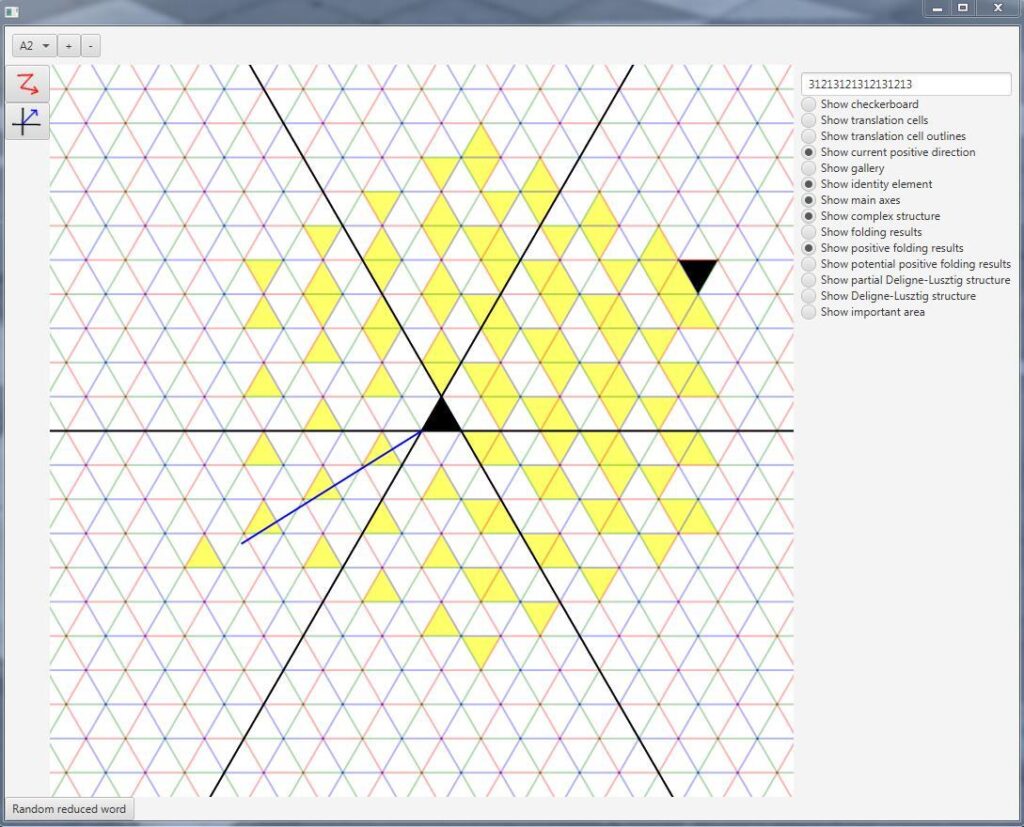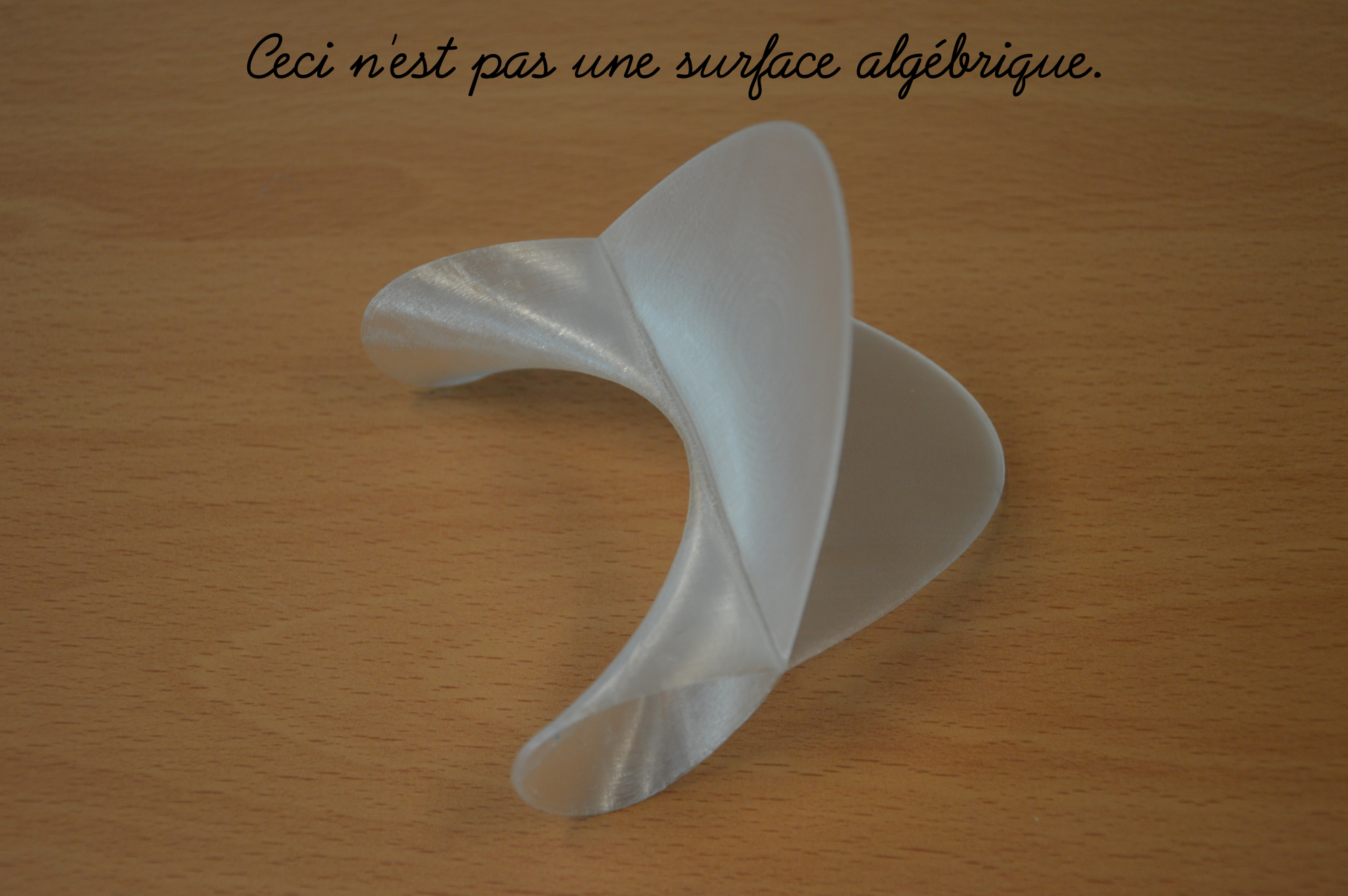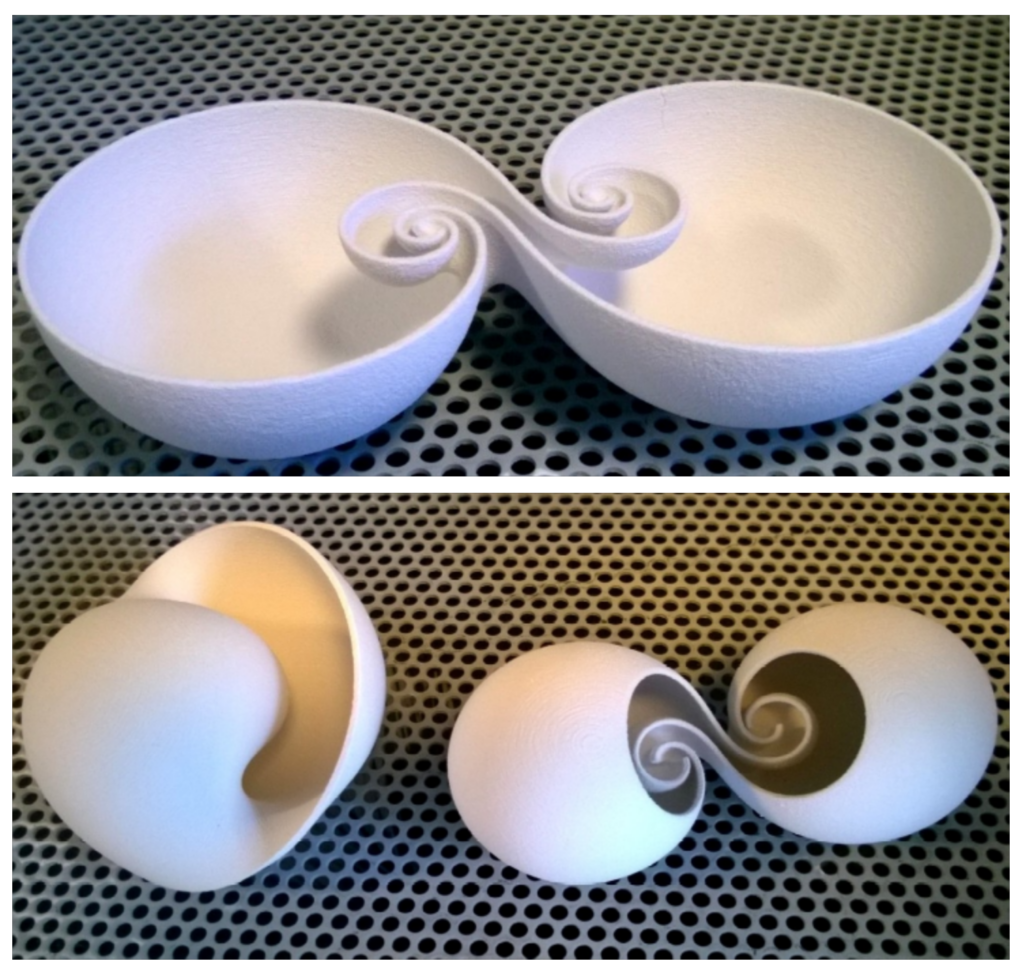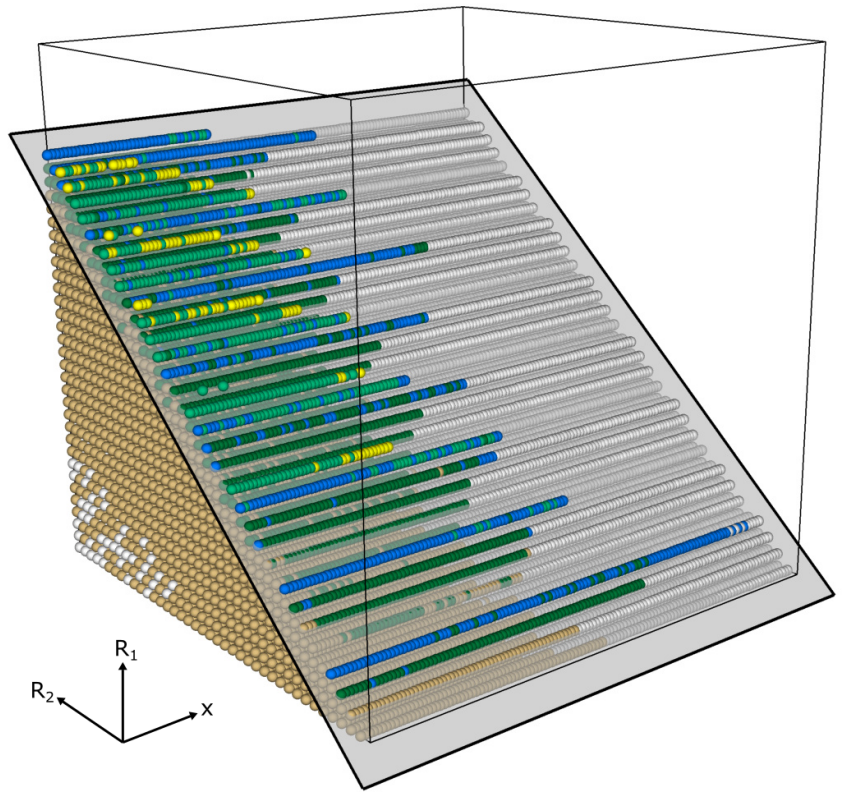The Seminar usually takes place bi-weekly on monday at 14:15 in Seminar Raum C (Mathematikon).
Schedule
16.01.2023
Speaker: Petra Schwer (University of Magdeburg)
Title: A picture’s worth a thousand words
Time: 14:15
Abstract: A single picture can sometimes convey an idea more clearly, vividly, or succinctly than any amount of words can. Sometimes the observer reads a different message than the creator of the picture. This is why pictures can be a source of new research ideas.
In this talk I will present two such examples. I’ll talk about research projects of my own that were sparked and supported by a lot of pictures.

Here are some related links:
* https://arxiv.org/abs/math/0504443
* https://arxiv.org/abs/1504.07076
* https://arxiv.org/abs/2109.02293
* https://link.springer.com/article/10.1007/BF01390082
* https://arxiv.org/abs/1801.10394
28.11.2022 – A 3D printing journey into algebraic surfaces
Speaker: Alba Marina Málaga Sabogal (Université de Lorraine)
Time: 14:15
Abstract: An algebraic surface in the Euclidean space is just the set of solutions of a polynomial equation in 3 variables.
First physical representations of such objects date from well before 3d printing was even invented.
In this talk, I will present a couple of ways you can get a numerical approximation of an algebraic surface suitable for 3d printing.
The talk will be lllustrated by 3D printed models by different authors, including Silviana Amethyst, Manfred Kuhnkies et al. and François Apéry.
I will also include practical advice on 3D-printing your own algebraic surfaces.

31.10.2022 – Geometry, loop groups and visualizations
Speaker: David Brander (Technical University of Denmark)
Time: 14:15
Abstract: Loop group methods associated with harmonic maps from a Riemannian or Lorentzian surface into a symmetric space can be used to produce many example solutions within interesting surface classes; such as Willmore surfaces and constant Gauss/mean curvature surfaces in space forms. For instance, one can solve the Cauchy problem to produce examples with certain prescribed geometric features, and the solutions can be computed numerically. Visualizing the solutions is valuable both for illustrating the theory as well as for forming new conjectures. In this talk I will say a little about how this works and show some examples from the surface classes mentioned above.


17.10.2022 – Illustrations in Math Research – A case study on Turing Patterns
Speaker: Martin Skrodzki (Delft University of Technology)
Time: 14:15
Abstract: Illustration is a powerful tool for research mathematicians, to generate hypotheses, to guide intuition, and to deepen understanding. In my talk I will give an example for the successful use of illustration in mathematics based on research of Turing patterns. These patterns were introduced by Alan M. Turing in 1952 as a means to understand skin coloring, e.g., of various animals. They are described by a differential equation acting on two or more chemicals and their diffusion processes.
The case example will cover the generalization of Turing patterns to 3D and some resulting further research questions.
Literature:
https://archive.bridgesmathart.org/2017/bridges2017-415.html#gsc.tab=0
https://hal.archives-ouvertes.fr/hal-03270664
https://arxiv.org/abs/2006.16676

